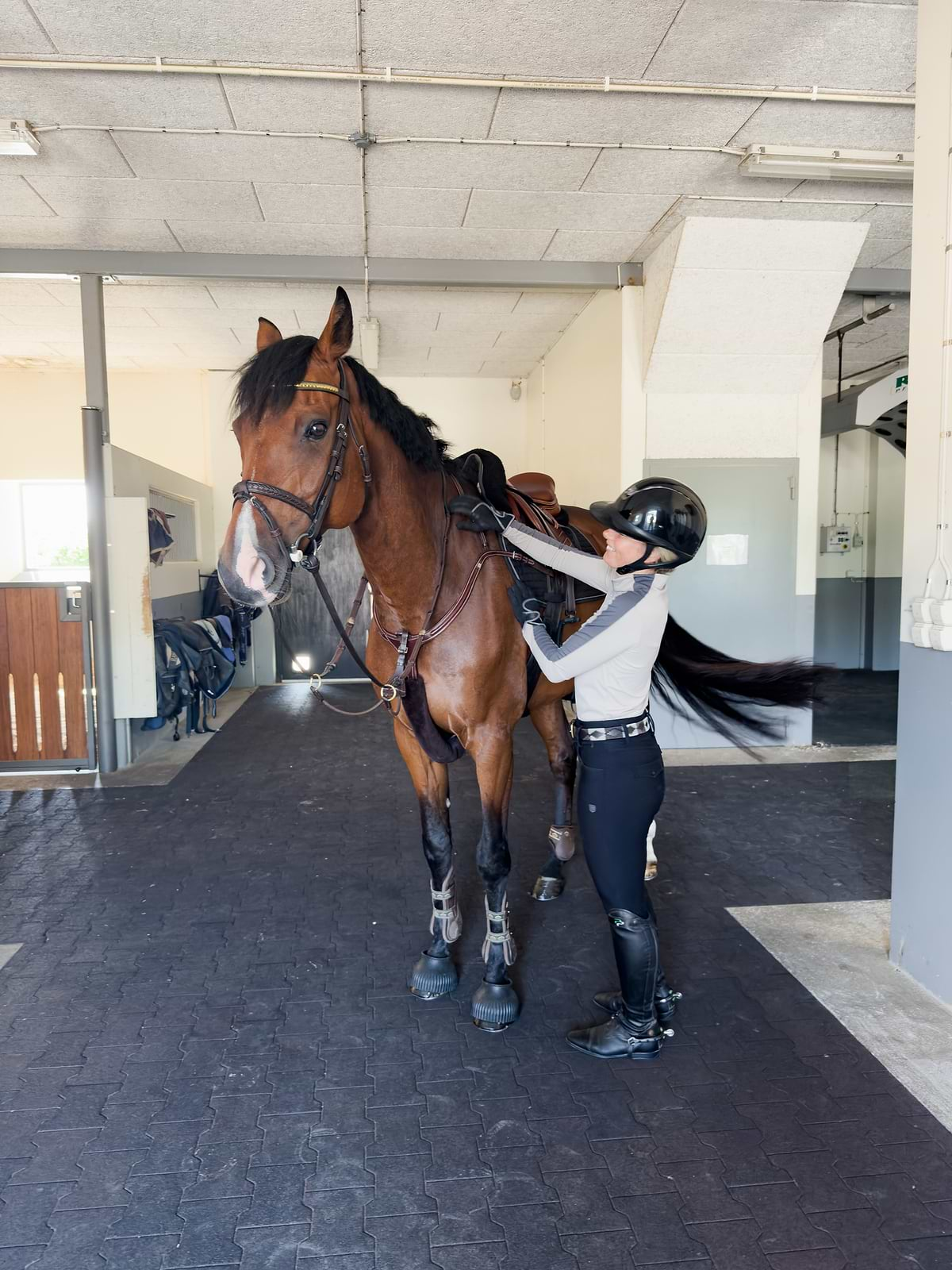Johanna Lassnack's
Breathing Exercise
In this article, MD athlete Johanna Lassnack walks us through her breathing exercise to stay calm and collected in the saddle.
Amanda
Thu 21 Sep - 23

Johanna Lassnack's
Breathing Exercise
In this article, MD athlete Johanna Lassnack walks us through her breathing exercise to stay calm and collected in the saddle.
Amanda
Thu 21 Sep - 23
When we're on horseback, it's crucial that we stay calm and collected. Sometimes, we put a lot of pressure on ourselves to perform well, which can lead to stress and tension in both our bodies and minds. Our muscles tighten and our thinking becomes less clear, and this tension can negatively impact our horse. When we're in a stressful situation, our breathing is often the first thing that's affected. That's why it's essential to learn how to control our breathing through exercises.
"By learning to control our breathing, we can think more clearly which makes it easier to focus and perform better. Also, proper breathing helps our muscles relax, which sets the right conditions for a successful riding session for both ourselves and our horses."
– Johanna Lassnack
By learning to control our breathing, we can think more clearly which makes it easier to focus and perform better. Also, proper breathing helps our muscles relax, which sets the right conditions for a successful riding session for both ourselves and our horses.
However, when we become stressed, it's common to breathe into our chest instead of our belly, which can result in insufficient air and oxygen reaching our lungs, brain, and muscles. This lack of oxygen in turn can impair our ability to think clearly.
To ensure that you're breathing correctly, try this simple three-step exercise:
1. Breathe in through your nose and out through your mouth
Put one hand on your belly and feel that your belly expands when you breathe in.
When we're stressed we tend to take shorter breaths, which can cause our breath to move higher up into our chest. Instead, try to think of it this way: When you breathe in (fill your lungs with air) your belly should expand and stick out, and when you exhale (empty your lungs of air) your belly should contract and go back in. Keep breathing with your hand on your belly until it feels natural to breathe with your belly moving in sync with your breath.
2. Start counting your breaths
Breathe in for four seconds and out for six seconds. If you're looking to reduce stress through breathing, the most critical aspect is your exhalation. When exhaling, you lower your cortisol levels, the body's stress hormone. So it's essential to make sure your exhalation is longer than your inhalation. Try holding your breath for a second after inhaling for four seconds, and again for a second after exhaling for six seconds, before starting the process over again.
3. Scan your body from the bottom up
Start by imagining that you're scanning yourself from the bottom up. Begin by moving your toes slightly and then progress up to your knees, asking yourself: "Can I relax even more in this area?" Continue up to your thigh muscles and glutes, allowing yourself to feel heavy in the saddle and feel the pressure from your knees decreasing. Then, move up to your hands, elbows, and shoulders. Can you release some tension even there? Let your shoulders drop down. Finally, scan your face and drop your eyebrows and jaw.
As with any exercise, practice is key, so try doing this exercise regularly, for example before going to bed. It will prepare you for the night and make it easier for you to fall asleep. It's also a great exercise to do when you walk your horse when warming up or cooling down after training.
Consistent practice of these exercises will make them a reliable tool to turn to in times of nervousness or stress. You'll develop the ability to control your thoughts and your body, making you a better rider for your horse. This way, you can have fun and rewarding riding sessions or competitions together, even in high-pressure situations.
